Brownstone Institute
Uncovering the Army of Federal Censors

BY
I’ve recently posted twice on the case of Missouri v. Biden, in which the states of Missouri and Louisiana — along with four private plaintiffs (Jay Bhattacharya, Martin Kulldorff, the non-profit Health Freedom Louisiana, and yours truly) represented by the New Civil Liberties Alliance — are suing the Biden Administration for alleged free speech violations. Specifically, the executive branch of the federal government has been colluding with social media to censor any content on social media platforms — Twitter, YouTube (owned by Google), and LinkedIn (owned by Microsoft), Facebook and Instagram (both owned by Meta) — any content that questions, challenges, or contradicts the government’s covid policies.
While private companies might arguably choose to censor content on their platforms, the government cannot pressure or coerce private companies to censor disfavored content. Any such action is clearly a violation of the free speech guaranteed by the First Amendment of the US Constitution. As we articulate in our latest legal brief: “Under the First Amendment, the federal Government should have no role in policing private speech or picking winners and losers in the marketplace of ideas. But that is what federal officials are doing, on a massive scale.”
Our joint statement on discovery disputes legal brief, filed with the court and made public today, reveals scores of federal officials across at least eleven federal agencies have secretly communicated with social-media platforms to censor and suppress private speech federal officials disfavor. This unlawful enterprise has been wildly successful. Here are just a few excerpts from this document, which includes attachments of hundreds of pages of emails and other governmental and Big Tech internal communications as supporting evidence. These documents were obtained after we requested the following information on discovery:
Plaintiffs served interrogatories and document requests upon the Government Defendants seeking the identity of federal officials who have been and are communicating with social-media platforms about disinformation, misinformation, malinformation, and/or any censorship or suppression of speech on social media, including the nature and content of those communications. Plaintiffs also served third-party subpoenas on five major social-media platforms – Twitter, Facebook and Instagram (both owned by Meta), YouTube, and LinkedIn. On August 17, 2022, the Government Defendants provided objections and responses to the Plaintiff States’ discovery requests, and began a rolling production of documents that was completed on August 26, 2022.
Here’s some of we found so far in the documents that have been turned over, as described in our latest legal filing to the court:
Secretary Mayorkas of DHS [Department of Homeland Security] commented that the federal Government’s efforts to police private speech on social media are occurring “across the federal enterprise.” Doc. 45, ¶ 233. It turns out that this statement is true, on a scale beyond what Plaintiffs could ever have anticipated. The limited discovery produced so far provides a tantalizing snapshot into a massive, sprawling federal “Censorship Enterprise,” which includes dozens of federal officials across at least eleven federal agencies and components identified so far, who communicate with social-media platforms about misinformation, disinformation, and the suppression of private speech on social media—all with the intent and effect of pressuring social-media platforms to censor and suppress private speech that federal officials disfavor.
The discovery provided so far demonstrates that this Censorship Enterprise is extremely broad, including officials in the White House, HHS, DHS, CISA [Cybersecurity and Infrastructure Security Agency], the CDC, NIAID, and the Office of the Surgeon General; and evidently other agencies as well, such as the Census Bureau, the FDA, the FBI, the State Department, the Treasury Department, and the US Election Assistance Commission. And it rises to the highest levels of the US Government, including numerous White House officials. More discovery is needed to uncover the full scope of this “Censorship Enterprise,” and thus allow Plaintiffs the opportunity to achieve fully effective injunctive relief. Defendants have objected to producing some of the most relevant and probative information in their possession—i.e., the identities, and nature and content of communications, of White House officials and officials at other federal agencies who are not yet Defendants in this case because they were unknown when Plaintiffs served their discovery six weeks ago. Defendants have objected to producing discovery that would reveal both the height and the breadth of the federal “Censorship Enterprise.” The Court should overrule these objections and order Defendants to provide this highly relevant, responsive, and probative information.
Our brief continues:
First, the breadth and extent of the federal Defendants’ censorship activities is massive. In their initial response to interrogatories, Defendants initially identified forty-five federal officials at DHS, CISA, the CDC, NIAID, and the Office of the Surgeon General (all within only two federal agencies, DHS and HHS), who communicate with social-media platforms about misinformation and censorship. Ex. 1 (Defendants’ Redacted Interrogatory Responses), at 15-18.
[…]
The third-party social-media platforms, moreover, have revealed that more federal agencies are involved. Meta, for example, has disclosed that at least 32 federal officials—including senior officials at the FDA, the US Election Assistance Commission, and the White House—have communicated with Meta about content moderation on its platforms, many of whom were not disclosed in response to Plaintiffs’ interrogatories to Defendants. YouTube disclosed eleven federal officials engaged in such communications, including officials at the Census Bureau and the White House, many of whom were also not disclosed by Defendants. Twitter disclosed nine federal officials, including senior officials at the State Department who were not previously disclosed by Defendants.
As I will write about more in a future post, the government is protecting Anthony Fauci and other high level officials by refusing to reveal documents related to their involvement. Stay tuned for more on that issue. For now, as our brief explains here, those implicated include many officials at the highest level of the current administration:
Second, these federal censorship activities include very senior officials within the US Government, i.e., “members of our senior staff,” in former White House Press Secretary Jen Psaki’s words. Doc. 42, ¶ 174. Defendants have steadfastly refused to respond to any interrogatories or document requests directed to the White House officials, such as White House Press Secretary Karine Jean-Pierre and Dr. Fauci in his capacity as Chief Medical Advisor to the President. But their own document production provides a glimpse into the involvement of several senior White House officials in communications with social-media platforms about censorship – including White House Senior Covid-19 Advisor Andrew Slavitt, Deputy Assistant to the President Rob Flaherty, White House Covid-19 Director of Strategic Communications and Engagement Courtney Rowe, White House Digital Director for the Covid-19 Response Team Clarke Humphrey, among others. See Ex. 3.
Further, the social-media platforms have independently disclosed the identities of senior White House officials involved in such communications. For example, Meta has disclosed the involvement of additional White House officials as White House Counsel Dana Remus and White House Partnerships Manager Aisha Shah, as well as Deputy Assistant to the President Rob Flaherty. YouTube has disclosed the involvement of White House officials such as Rob Flaherty and Benjamin Wakana, the Director of Strategic Communications and Engagement at the White House COVID-19 Response Team. Twitter has disclosed the involvement of Andrew Slavitt.
Our lawyers then cite a few examples of how this government censorship regime has been functioning, as revealed by internal communications:
The limited communications produced so far from these high-level officials are particularly relevant and probative, because they provide revealing glimpses into the intensive oversight and pressure to censor that senior federal officials placed on social-media platforms. For example, after President Biden publicly stated (about Facebook) on July 16, 2021, that “They’re killing people,” a very senior executive at Meta (Facebook and Instagram) reached out to Surgeon General Vivek Murthy to engage in damage control and appease the President’s wrath. Ex. 4, at 1. Soon thereafter, the same Meta executive sent a text message to Surgeon General Murthy, noting that “it’s not great to be accused of killing people,” and expressing that he was “keen to find a way to deescalate and work together collaboratively.” Ex. 5, at 1.
Such “deescalation” and “working together collaboratively,” naturally, involved increasing censorship on Meta’s platforms. One week after President Biden’s public accusation, on July 23, 2021, that a senior Meta executive sent an email to Surgeon General Murthy stating, “I wanted to make sure you saw the steps we took just this past week to adjust policies on what we are removing with respect to misinformation, as well as steps taken to further address the ‘disinfo dozen’: we removed 17 additional Pages, Groups, and Instagram accounts tied to the disinfo dozen….” Ex. 3, at 2. Again, on August 20, 2021, the same Meta executive emailed Murthy to assure him that Facebook “will shortly be expanding our COVID policies to further reduce the spread of potentially harmful content on our platform. These changes will apply across Facebook and Instagram,” and they included “increasing the strength of our demotions for COVID and vaccine-related content,” and “making it easier to have Pages/Groups/Accounts demoted for sharing COVID and vaccine-related misinformation.” Ex. 4, at 3. In addition, that senior Meta executive sent a “Facebook bi-weekly covid content report” to Surgeon General Murthy to White House official Andrew Slavitt, evidently to reassure these federal officials that Facebook’s suppression of COVID-19 “misinformation” was aggressive enough for their preferences. Ex. 4, at 6-19.
The brief then goes on to explain how this amounts to more than just collaboration or cooperation between government and Big Tech, but coercive use of power dynamics to pressure Big Tech to do the government’s bidding:
Such communications from the White House impose maximal pressure on social-media companies, and they clearly get results when it comes to censorship. And federal officials are fully aware that such pressure is necessary to induce social-media platforms to increase censorship. CISA [Cybersecurity and Infrastructure Security Agency] Director Jen Easterly, for example, texted with another CISA official about “trying to get us in a place where Fed can work with platforms to better understand the mis/dis trends so relevant agencies can try to prebunk/debunk as useful,” and complained about the Government’s need to overcome the social-media platforms’ “hesitation” to working with the government: “Platforms have got to get more comfortable with gov’t. It’s really interesting how hesitant they remain.” Ex. 5, at 4 (emphasis added).
Perhaps these companies were hesitant because they knew that the government pressure and coercion was clearly unlawful, not to mention the fact that private companies and publishers don’t want to be told what to publish and don’t want their policies dictated by government officials. Our legal brief goes on:
In fact, such pressures from government officials on social-media companies, along with the many public statements alleged in the Complaint, have succeeded on a grand scale. Discovery received so far indicates that a veritable army of federal bureaucrats are involved in censorship activities “across the federal enterprise.” They include the 45 key custodians identified in Plaintiffs’ interrogatory responses so far, 32 federal officials identified by Facebook so far, eleven officials identified by YouTube, and nine identified by Twitter (many of which do not overlap, either with each other or Defendants’ disclosures). And Defendants have not yet received interrogatory responses reflecting Defendants’ knowledge of federal officials at other agencies who communicate with social-media platforms about censorship — but apparently there are many. So many, in fact, that CISA Director Jen Easterly and another CISA official apparently complained, in an internal text messages, that “chaos” would result if all federal officials were “independently” contacting social-media platforms about so-called misinformation: “Not our mission but was looking to play a coord role so not every D/A is independently reaching out to platforms which could cause a lot of chaos.” Ex. 5, at 4.
These federal bureaucrats are deeply embedded in a joint enterprise with social-media companies to procure the censorship of social-media speech. Officials at HHS routinely flag content for censorship, for example, by organizing weekly “Be On The Lookout” meetings to flag disfavored content, Ex. 6; sending lengthy lists of examples of disfavored posts to be censored, Ex. 6, at 21-22; serving as privileged “fact checkers” whom social-media platforms consult about censoring private speech, Ex. 7; and receiving detailed reports from social-media companies about so-called “misinformation” and “disinformation” activities online, Ex. 4; among others. CISA, likewise, has aggressively embraced its “evolved mission” of screening complaints of social-media disinformation and then “routing disinformation concerns” to social-media platforms, Doc. 45, ¶¶ 250-251. CISA routinely receives reports of perceived “disinformation” and forwards them to social-media companies, placing the considerable weight of its authority as a federal national-security agency behind other parties’ demands for suppression of private speech. Ex. 8.
Moreover, many of these substantive communications from federal officials flagging specific posts and content for censorship seem to occur through alternative channels of communication that Plaintiffs have not yet obtained (as the third-party social-media platforms contend they are shielded from discovery by the Stored Communications Act). For example, Facebook trained CDC and Census Bureau officials on how to use a “Facebook misinfo reporting channel.” Ex. 9. Twitter offered federal officials a privileged channel for flagging misinformation through a “Partner Support Portal.” Ex. 9, at 69. YouTube has disclosed that it granted “trusted flagger” status to Census Bureau officials, which allows privileged and expedited consideration of their claims that content should be censored.
In the face of these and many other disclosures, Defendants are refusing to provide some of the most relevant and most probative evidence of the most egregious First Amendment violations.
Our legal team will continue to press for full disclosure of the requested content that the government still refuses to hand over to the court. And yes, we brought the receipts for all these allegations — the entire document is available here, and the supporting evidence is included on pages 142 – 711 for those who want to dig into the gruesome details. For those who want the shorter version, the NCLA press release is available here.
I suspected all this was happening but didn’t imagine the sheer scope — the breadth, depth, and coordination — suggested by the evidence that our legal team has uncovered so far during the discovery phase of the legal proceedings. To see this evidence on the page, which we know is just the tip of the iceberg, is simply shocking — and I’m not an easy person to shock. Likewise, the deep involvement of many of our national security agencies is revealing and disturbing, even for this author who just wrote a book with the subtitle, “The Rise of the Biomedical Security State.”
Hyperbole and exaggeration have been common features on both sides of covid policy disputes. But I can say with all soberness and circumspection (and you, kind readers, will correct me if I am wrong here): this evidence suggests we are uncovering the most serious, coordinated, and large-scale violation of First Amendment free speech rights by the federal government’s executive branch in US history. Period, full stop. Even wartime propaganda efforts never reached this level of censorship, nor did the government in days past have the power of today’s social media at its disposal.
Stay tuned for more updates as this case unfolds.
Republished from the author’s Substack
Brownstone Institute
Trump Covets the Nobel Peace Prize

From the Brownstone Institute
By
Many news outlets reported the announcement of the Nobel Peace Prize on Friday by saying President Donald Trump had missed out (Washington Post, Yahoo, Hindustan Times, Huffington Post), not won (USA Today), fallen short (AP News), lost (Time), etc. There is even a meme doing the rounds about ‘Trump Wine.’ ‘Made from sour grapes,’ the label explains, ‘This is a full bodied and bitter vintage guaranteed to leave a nasty taste in your mouth for years.’

For the record, the prize was awarded to María Corina Machado for her courageous and sustained opposition to Venezuela’s ruling regime. Trump called to congratulate her. Given his own attacks on the Venezuelan president, his anger will be partly mollified, and he could even back her with practical support. He nonetheless attacked the prize committee, and the White House assailed it for putting politics before peace.
He could be in serious contention next year. If his Gaza peace plan is implemented and holds until next October, he should get it. That he is unlikely to do so is more a reflection on the award and less on Trump.
So He Won the Nobel Peace Prize. Meh!
Alfred Nobel’s will stipulates the prize should be awarded to the person who has contributed the most to promote ‘fraternity between nations…abolition or reduction of standing armies and…holding and promotion of peace congresses.’ Over the decades, this has expanded progressively to embrace human rights, political dissent, environmentalism, race, gender, and other social justice causes.
On these grounds, I would have thought the Covid resistance should have been a winner. The emphasis has shifted from outcomes and actual work to advocacy. In honouring President Barack Obama in 2009, the Nobel committee embarrassed itself, patronised him, and demeaned the prize. His biggest accomplishment was the choice of his predecessor as president: the prize was a one-finger send-off to President George W. Bush.
There have been other strange laureates, including those prone to wage war (Henry Kissinger, 1973), tainted through association with terrorism (Yasser Arafat, 1994), and contributions to fields beyond peace, such as planting millions of trees. Some laureates were subsequently discovered to have embellished their record, and others proved to be flawed champions of human rights who had won them the treasured accolade.
Conversely, Mahatma Gandhi did not get the prize, not for his contributions to the theory and practice of non-violence, nor for his role in toppling the British Raj as the curtain raiser to worldwide decolonisation. The sad reality is how little practical difference the prize has made to the causes it espoused. They bring baubles and honour to the laureates, but the prize has lost much of its lustre as far as results go.
Trump Was Not a Serious Contender
The nomination processes start in September and nominations close on 31 January. The five-member Norwegian Nobel committee scrutinises the list of candidates and whittles it down between February and October. The prize is announced on or close to 10 October, the date Alfred Nobel died, and the award ceremony is held in Oslo in early December.
The calendar rules out a newly elected president in his first year, with the risible exception of Obama. The period under review was 2024. Trump’s claims to have ended seven wars and boasts of ‘nobody’s ever done that’ are not taken seriously beyond the narrow circle of fervent devotees, sycophantic courtiers, and supplicant foreign leaders eager to ingratiate themselves with over-the-top flattery.
Trump Could Be in Serious Contention Next Year
Trump’s 20-point Gaza peace plan falls into three conceptual-cum-chronological parts: today, tomorrow, and the day after. At the time of writing, in a hinge moment in the two-year war, Israel has implemented a ceasefire in Gaza, Hamas has agreed to release Israeli hostages on 13-14 October, and Israel will release around 2,000 Palestinian prisoners (today’s agenda). So why are the ‘Ceasefire Now!’ mobs not out on the streets celebrating joyously instead of looking morose and discombobulated? Perhaps they’ve been robbed of the meaning of life?
The second part (tomorrow) requires Hamas demilitarisation, surrender, amnesty, no role in Gaza’s future governance, resumption of aid deliveries, Israeli military pullbacks, a temporary international stabilisation force, and a technocratic transitional administration. The third part, the agenda for the day after, calls for the deradicalisation of Gaza, its reconstruction and development, an international Peace Board to oversee implementation of the plan, governance reforms of the Palestinian Authority, and, over the horizon, Palestinian statehood.
There are too many potential pitfalls to rest easy on the prospects for success. Will Hamas commit military and political suicide? How can the call for democracy in Gaza and the West Bank be reconciled with Hamas as the most popular group among Palestinians? Can Israel’s fractious governing coalition survive?
Both Hamas and Israel have a long record of agreeing to demands under pressure but sabotaging their implementation at points of vulnerability. The broad Arab support could weaken as difficulties arise. The presence of the internationally toxic Tony Blair on the Peace Board could derail the project. Hamas has reportedly called on all factions to reject Blair’s involvement. Hamas official Basem Naim, while thanking Trump for his positive role in the peace deal, explained that ‘Palestinians, Arabs and Muslims and maybe a lot [of] people around the world still remember his [Blair’s] role in causing the killing of thousands or millions of innocent civilians in Afghanistan and Iraq.’
It would be a stupendous achievement for all the complicated moving parts to come together in stable equilibrium. What cannot and should not be denied is the breathtaking diplomatic coup already achieved. Only Trump could have pulled this off.
The very traits that are so offputting in one context helped him to get here: narcissism; bullying and impatience; bull in a china shop style of diplomacy; indifference to what others think; dislike of wars and love of real estate development; bottomless faith in his own vision, negotiating skills, and ability to read others; personal relationships with key players in the region; and credibility as both the ultimate guarantor of Israel’s security and preparedness to use force if obstructed. Israelis trust him; Hamas and Iran fear him.
The combined Israeli-US attacks to degrade Iran’s nuclear capability underlined the credibility of threats of force against recalcitrant opponents. Unilateral Israeli strikes on Hamas leaders in Qatar highlighted to uninvolved Arabs the very real dangers of continued escalation amidst the grim Israeli determination to rid themselves of Hamas once and for all.
Trump Is Likely to Be Overlooked
Russia has sometimes been the object of the Nobel Peace Prize. The mischievous President Vladimir Putin has suggested Trump may be too good for the prize. Trump’s disdain for and hostility to international institutions and assaults on the pillars of the liberal international order would have rubbed Norwegians, among the world’s strongest supporters of rules-based international governance, net zero, and foreign aid, the wrong way.
Brash and public lobbying for the prize, like calling the Norwegian prime minister, is counterproductive. The committee is fiercely independent. Nominees are advised against making the nomination public, let alone orchestrating an advocacy campaign. Yet, one laureate is believed to have mobilised his entire government for quiet lobbying behind the scenes, and another to have bad-mouthed a leading rival to friendly journalists.
Most crucially, given that Scandinavian character traits tip towards the opposite end of the scale, it’s hard to see the committee overlooking Trump’s loud flaws, vanity, braggadocio, and lack of grace and humility. Trump supporters discount his character traits and take his policies and results seriously. Haters cannot get over the flaws to seriously evaluate policies and outcomes. No prizes for guessing which group the Nobel committee is likely to belong to. As is currently fashionable to say when cancelling someone, Trump’s values do not align with those of the committee and the ideals of the prize.
Autism
Trump Blows Open Autism Debate
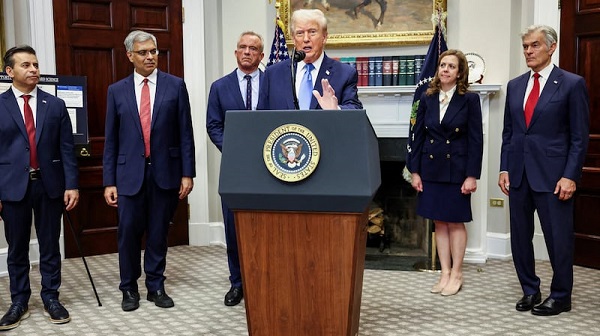
From the Brownstone Institute
By
Trump made sweeping claims that would have ended political careers in any other era. His health officials tried to narrow the edges, but the President ensured that the headlines would be his.
Autism has long been the untouchable subject in American politics. For decades, federal agencies tiptoed around it, steering research toward genetics while carefully avoiding controversial environmental or pharmaceutical questions.
That ended at the White House this week, when President Donald Trump tore through the taboo with a blunt and sometimes incendiary performance that left even his own health chiefs scrambling to keep pace.
Flanked by Health Secretary Robert F. Kennedy, Jr., NIH Director Jay Bhattacharya, FDA Commissioner Marty Makary, CMS Adminstrator Dr Mehmet Oz, and other senior officials, Trump declared autism a “horrible, horrible crisis” and recounted its rise in startling terms.
“Just a few decades ago, one in 10,000 children had autism…now it’s one in 31, but in some areas, it’s much worse than that, if you can believe it, one in 31 and…for boys, it’s one in 12 in California,” Trump said.
The President insisted the trend was “artificially induced,” adding: “You don’t go from one in 20,000 to one in 10,000 and then you go to 12, you know, there’s something artificial. They’re taking something.”
Trump’s Blunt Tylenol Warning
The headline moment came when Trump zeroed in on acetaminophen, the common painkiller sold as Tylenol — known as paracetamol in Australia.
While Kennedy and Makary described a cautious process of label changes and physician advisories, Trump dispensed with nuance.
“Don’t take Tylenol,” Trump said flatly. “Don’t take it unless it’s absolutely necessary…fight like hell not to take it.”
Kennedy laid out the evidence base, citing “clinical and laboratory studies that suggest a potential association between acetaminophen used during pregnancy and adverse neurodevelopmental outcomes, including later diagnosis for ADHD and autism.”
Makary reinforced the point with references to the Boston Birth Cohort, the Nurses’ Health Study, and a recent Harvard review, before adding: “To quote the dean of the Harvard School of Public Health, there is a causal relationship between prenatal acetaminophen use and neurodevelopmental disorders of ADHD and autism spectrum disorder. We cannot wait any longer.”
But where the officials spoke of “lowest effective dose” and “shortest possible duration,” Trump thundered over the top: “I just want to say it like it is, don’t take Tylenol. Don’t take it if you just can’t. I mean, it says, fight like hell not to take it.”
Vaccines Back on Center Stage
The President then pivoted to vaccines, reviving arguments that the medical establishment has long sought to bury. He blasted the practice of giving infants multiple injections at a single visit.
“They pump so much stuff into those beautiful little babies, it’s a disgrace…you get a vat of 80 different vaccines, I guess, 80 different blends, and they pump it in,” Trump said.
His solution was simple: “Go to the doctor four times instead of once, or five times instead of once…it can only help.”
On the measles, mumps, and rubella shot, Trump insisted: “The MMR, I think should be taken separately…when you mix them, there could be a problem. So there’s no downside in taking them separately.”
The moment was astonishing — echoing arguments that had once seen doctors like Andrew Wakefield excommunicated from medical circles.
It was the kind of line of questioning the establishment had spent decades trying to banish from mainstream debate.
Hep B Vaccine under Attack
Trump dismissed the rationale for giving the hepatitis B vaccine at birth.
“Hepatitis B is sexually transmitted. There’s no reason to give a baby that’s just born hepatitis B [vaccine]. So I would say, wait till the baby is 12 years old,” he said.
He made clear that he was “not a doctor,” stressing that he was simply offering his personal opinion. But the move could also be interpreted as Trump choosing to take the heat himself, to shield Kennedy’s HHS from what was sure to be an onslaught of criticism.
The timing was remarkable.
Only last week, the CDC’s Advisory Committee on Immunisation Practices (ACIP) had been preparing to vote on whether to delay the hepatitis B shot until “one month” of age — a modest proposal that mainstream outlets derided as “anti-vax extremism.”
By contrast, Trump told the nation to push the jab back 12 years. His sweeping denunciations made the supposedly radical ACIP vote look almost tame.
The irony was inescapable — the same media voices who had painted Kennedy’s reshaped ACIP as reckless now faced a President willing to say far more than the panel itself dared.
A New Treatment and Big Research Push
The administration also unveiled what it deemed a breakthrough: FDA recognition of prescription leucovorin, a folate-based therapy, as a treatment for some autistic children.
Makary explained: “It may also be due to an autoimmune reaction to a folate receptor on the brain not allowing that important vitamin to get into the brain cells…one study found that with kids with autism and chronic folate deficiency, two-thirds of kids with autism symptoms had improvement and some marked improvement.”
Dr Oz confirmed Medicaid and CHIP (the Children’s Health Insurance Program, which provides low-cost health coverage to children in families that earn too much to qualify for Medicaid) would cover the treatment.
“Over half of American children are covered by Medicaid and CHIP…upon this label change…state Medicaid programs will cover prescription leucovorin around the country, it’s yours,” said Oz.
Bhattacharya announced $50 million in new NIH grants under the “Autism Data Science Initiative.”
He explained that 13 projects would be funded using “exposomics” — the study of how environmental exposures like diet, chemicals, and infections interact with our biology — alongside advanced causal inference methods.
“For too long, it’s been taboo to ask some questions for fear the scientific work might reveal a politically incorrect answer,” Bhattacharya said. “Because of this restricted focus in scientific investigations, the answers for families have been similarly restricted.”
Mothers’ Voices
The press conference also featured raw testimony from parents.
Amanda, mother of a profoundly autistic five-year-old, told Trump: “Unless you’ve lived with profound autism, you have no idea…it’s a very hopeless feeling. It’s very isolating. Being a parent with a profound autistic child, even just taking them over to your friend’s house is something we just don’t do.”
Jackie, mother of 11-year-old Eddie, said: “I’ve been praying for this day for nine years, and I’m so thankful to God for bringing the administration into our lives…I never thought we would have an administration that was courageous enough to look into things that no prior administration had.”
Their stories underscored what Kennedy said at the announcement about “believing women.” Here were mothers speaking directly about their lived reality, demanding that uncomfortable conversations could no longer be avoided.
Clashes with the Press Corps
Reporters pressed Trump on the backlash from medical groups.
Asked about the American College of Obstetricians and Gynecologists (ACOG) declaring acetaminophen safe in pregnancy, Trump shot back, “That’s the establishment. They’re funded by lots of different groups. And you know what? Maybe they’re right. I don’t think they are, because I don’t think the facts bear it out at all.”
When one journalist raised the argument that rising diagnoses reflected better recognition, Kennedy bristled,
“That’s one of the canards that has been promoted by the industry for many years,” he said. “It’s just common sense, because you’re only seeing this in people who are under 50 years of age. If it were better recognition or diagnosis, you’d see it in the seventy-year-old men. I’ve never seen this happening in people my age.”
Another reporter then asked Trump, “Should the establishment media show at least some openness to trying to figure out what the causes are?”
“I wish they would. Yeah, why are they so close-minded?” Trump replied. “It’s not only the media, in all fairness, it’s some people, when you talk about vaccines, it’s crazy…I don’t care about being attacked.”
Breaking the Spell
For years, autism policy has been shaped by caution, consensus, and deference to orthodox positions. That spell was broken at today’s press conference.
The dynamic was striking. Kennedy, Makary, Bhattacharya, and Oz leaned on scientific papers, review processes, and cautious advisories. Trump, by contrast, brushed it all aside, hammering his message home through repetition and personal anecdotes.
Trump made sweeping claims that would have ended political careers in any other era. His health officials tried to narrow the edges, but the President ensured that the headlines would be his.
“This will be as important as any single thing I’ve done,” Trump declared. “We’re going to save a lot of children from a tough life, really tough life. We’re going to save a lot of parents from a tough life.”
Whatever the science ultimately shows, the politics of autism in America will never be the same.
Republished from the author’s Substack
-
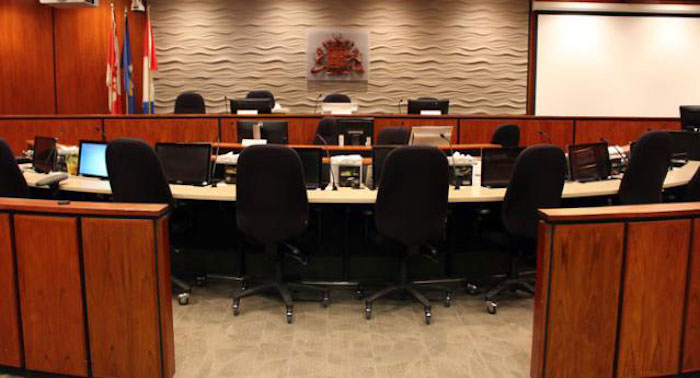
 Red Deer2 days ago
Red Deer2 days agoThe City of Red Deer’s Financial Troubles: Here Are The Candidates I Am Voting For And Why.
-
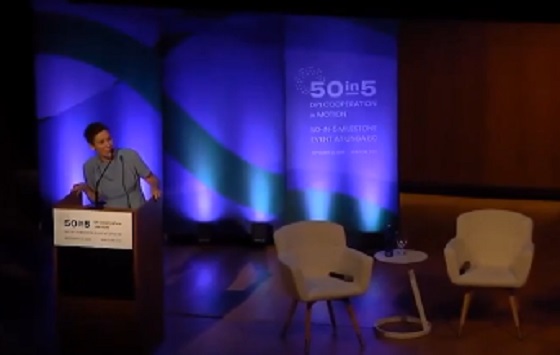
 Business1 day ago
Business1 day agoUN, Gates Foundation push for digital ID across 50 nations by 2028
-

 COVID-191 day ago
COVID-191 day agoThe Trials of Liberty: What the Truckers Taught Canada About Power and Protest
-
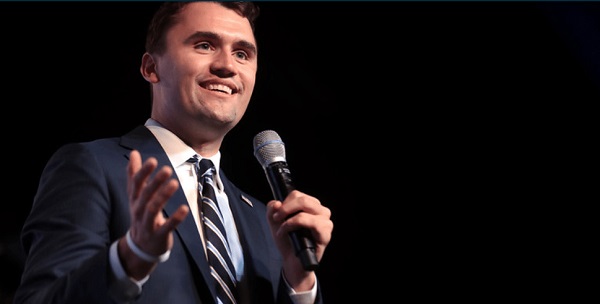
 C2C Journal1 day ago
C2C Journal1 day agoCharlie Kirk and the Fragility of Civic Peace
-

 International1 day ago
International1 day agoPoland’s president signs new zero income tax law for parents with two children
-
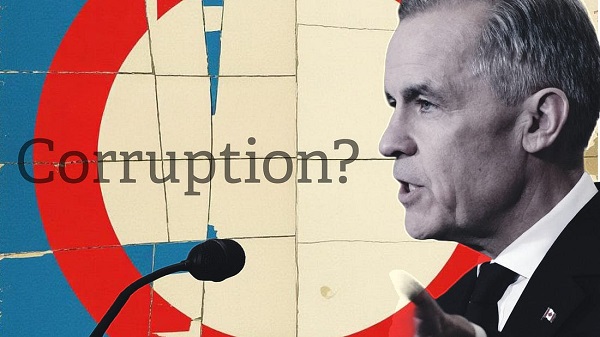
 Business2 days ago
Business2 days agoEthics on Ice: See You Next Year
-

 Automotive1 day ago
Automotive1 day ago$15 Billion, Zero Assurances: Stellantis Abandons Brampton as Trudeau-Era Green Deal Collapses
-

 Alberta2 days ago
Alberta2 days agoDiploma Exams Affected: No school Monday as ATA rejects offer of enhanced mediation







